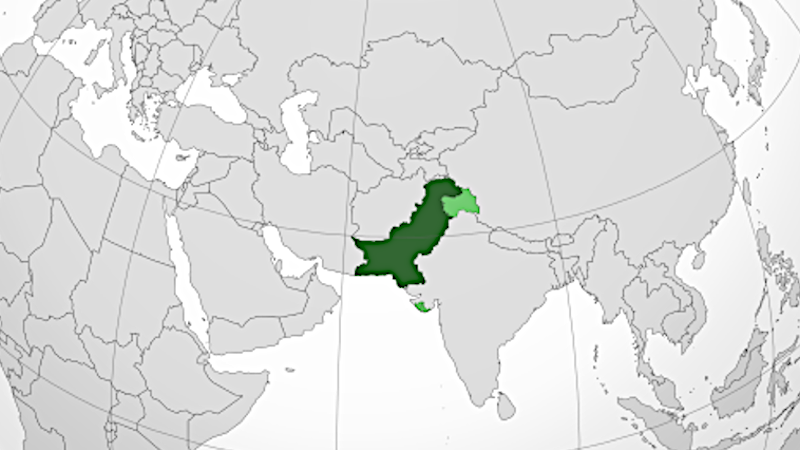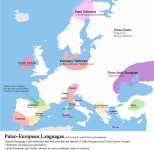Pakistan: The True Heir Of Indus Valley Civilization – Analysis
The vision of Pakistan’s founder Muhammad Ali Jinnah, in the 1940s did not only constitute creation of a Muslim political entity at the expense of India’s Hindu domination. It was also embedded in thousands of years of historical and geographical realities. These aspects clearly emerge from Jinnah’s interviews given to foreign correspondents where he described the geopolitical importance of Pakistan. The two nation reality also did not emerge only because of the differences between Hindu and Muslim peoples. It was an outcome of thousands of years of historical, geographical and genetic distinction between the peoples of Indus Valley Civilization and those occupying the Gangetic plains.
The existence of Indus Valley Civilization emerged though the ruins at Harappa in Punjab, Pakistan which were first described by Charles Masson in 1842, in his “Narrative of Various Journeys in Balochistan, Afghanistan, and the Punjab.” Though the site was visited by General Alexander Cunningham in 1856, who later headed the archeological survey of northern India, it was in 1921-22 that the excavations began which unearthed the great civilization buried under the sand for thousands of years.
The irony of it all was that it was General Alexander Cunningham who allowed East Indian Railways which was constructing railway line between the cities of Lahore and Karachi, to use the ancient bricks recovered from these sites as track ballast for the 150 kilometers of nearby stretch and thus destroyed much of the city of Harappa (3300 BC – 1300 BC). Mohenjodaro (2600 BC – 1900 BC) in Sindh, Pakistan was excavated by 1931. Mehrgarh (7000 BC -. 2500 BC) in Balochistan, Pakistan was discovered in 1974 and the excavations continued from 1974-86 and again from 1997-2000. Rehman Dheri (4000 BC) in Khyber Pakhtunkhwa was excavated from 1976-1980. Based on recent evidence and analyses, archeologists and historians have proclaimed that Indus Valley Civilization is over 9000 years old, making it one of the oldest civilizations of the world.
The South Asian subcontinent is principally divided into two major geographical regions; the Indus Valley and its westerly inclined tributaries, and the Ganges Valley with its easterly inclined tributaries. In his book, “The Indus Saga and the Making of Pakistan,” Aitzaz Ahsan identifies the geographical divide between these two regions as the Gurdaspur-Kathiawar salient, a watershed which is southwesterly inclined down to the Arabian Sea. This watershed also depicted the dividing line between the peoples of Indus Valley Civilization and those of Gangetic plains and also corresponds almost exactly with the current day Pakistan-India border.
Historically, only the Mauryas, Muslims and the British amalgamated these two regions as a unified state. For most of the remaining history, when one empire did not rule both the regions as a unified state, the Indus Valley Civilizational domain was always governed as one separate political entity.
Rather than an unnatural creation as propounded by many, Pakistan much more than the Gangetic plains, is an appropriate and modern embodiment of thousands of years old Indus Valley Civilization. The historical, geographical and its people’s organic linkages with Arab, Persian, Turkic and South Central Asian populace also clearly differentiates it as a distinct and definite independent identity as compared to the rest of India.
The discovery of Indus Valley Civilization in the run up to 1947 independence of Pakistan and India provided Indian nationalist Hindus an opportunity, to embed their Vedic Hindu cultural identity in a civilization, which was one of the oldest civilizations on earth and also predated emergence of Islam. However, the later identification of emergence of Vedic Hindu cultural traditions between 1500 – 600 BC, discounted such linkages. Also, the fact that Indus Valley Civilization’s cultural moorings were discovered mainly in the Indus River Valley, and partly in Ghaggar-Hakra basin and in the Doab, these cultural moorings did not find an extension into the central and lower Ganges Valley in the eastern and central Indian plains. The presence of fortified cities, town planning and drainage system, depiction of specialized epic art form and the architecture of burnt bricks, sea trade, use of seals, weights, measures and script and the custom of burying the dead in cemeteries, presented clear differentiation because of the absence of such depiction in Vedic Hindu literature and culture.
Many adherents of Indian Hindu nationalist ideology believed that India was and is a primarily Hindu nation and has Hindu religious culture in continuity from Vedic Aryans. The mosaic of cultures of the past evolving into composite Indian Hindu culture through the process of history was not based on archeological evidence but what they essentially believed in. In many cases distorting and manipulating or even forging the mute archaeological evidence through depiction of fire places as fire altars, waste pits as sacrificial pits in Harappan era sites and the imaginary reading of Sanskrit legends, was quoted in order to suit their pseudo-ideological and opportunistic interests.
Between 1900-1300 BC the civilization declined and there were no more references to Meluhha (Mesopotamian name for Indus Valley Civilization landmass) in Mesopotamian finds. However, the people who made up this great civilization continued living in places like Mehrgarh, Harappa, Mohenjodaro and other settlements long after that.
The legacy of Indus Valley Civilization lives on in present day Pakistan. Amongst some of the aspects that can still be traced to this legacy are the trade and commerce routes developed by the mentors of this great civilization. Ships from Meluhha regularly sailed from locations near modern day city of Karachi for the ports of Babylon. And they evidently made stops all along the way, as indicated through discovery of seals found in Oman, Abu Dhabi and Bahrain as well.
The city of Peshawar lies on what is thought to have been one of their main overland trade routes. That route is now a major highway that constitutes the eastern approach to the Khyber Pass and links the northwestern Indus River Plain to the highlands of Afghanistan and Central Asia. An old branch of the route runs from Peshawar, south into rugged tribal territory, through the Pakistani cities of Kohat and Bannu and the foothills of the Suleiman Mountains down across the Gomal Plain to the early historical site of Rehman Dheri.
After the decline of this civilization, the religion and language of which has still not been deciphered, at different times these people followed Vedic Hindu culture and traditions, also adopted Buddhism and in the end embraced Islam and are now overwhelmingly Muslim.
The core spread of Indus Valley Civilization primarily lay in Pakistan. The three major cities and many other sites which represent the core of Indus Valley Civilization are all located in Pakistan. However, the Indians still refer to India as the “Home of Indus Valley Civilization,” which is surprising and indeed a misnomer. India needs to realign its history and should seek its identity in its own legacy instead of claiming something to which they do not belong to.
It is the people of Pakistan who represent one of the oldest civilizations on earth. Indus Valley Civilization’s legacy is linked to Pakistan and this fact cannot be denied. The people of Pakistan thus rightly claim to be the true heirs of Indus Valley Civilization.
The vision of Pakistan's founder Muhammad Ali Jinnah, in the 1940s did not only constitute creation of a Muslim political entity at the expense of India's Hindu domination. It was also embedded in thousands of years of historical and geographical realities. These aspects clearly emerge from...

www.eurasiareview.com










